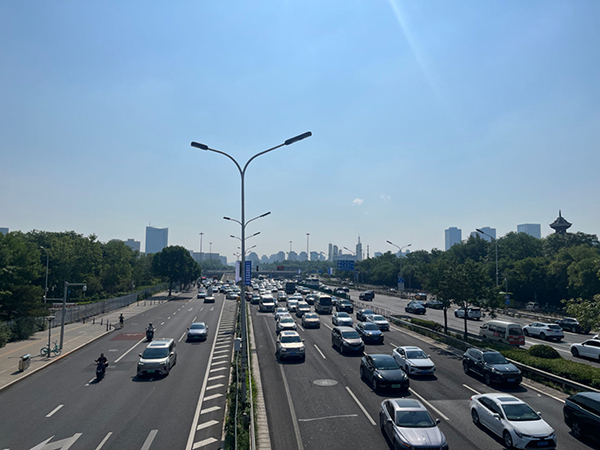A recent study published in Nature Geoscience offers new insights into combating ozone (O3) pollution in China. The research, conducted by Prof. SU Hang from the Institute of Atmospheric Physics at the Chinese Academy of Sciences, alongside Prof. ZHANG Yuanhang and Prof. LI Xin from Peking University, suggests effective ways to manage China's air quality challenges.
Despite significant progress in reducing fine particulate matter (PM2.5) over the past decade through stringent clean air policies, ozone levels in China have continued to rise. This trend contrasts sharply with the decreasing ozone levels seen in Europe and North America since the 1990s, making it a major challenge for China.
The study highlights the unique trend of ozone changes in Beijing, which is closely linked to the atmospheric hydroxyl radical turnover rate. This relationship can be explained and predicted by changes in the reactivity ratio of volatile organic compounds(VOCs) to nitrogen oxide. The researchers found that reducing VOC emissions should be the top priority, followed by further controls on nitrogen oxides. Lowering this reactivity ratio is essential for effective ozone management.
Ground level ozone pollution another challenge yet to make. (Image by ZHANG Yuxuan)
This research provides a clear direction for future policies aimed at reducing ozone levels. By focusing first on cutting VOC emissions, China can develop a practical roadmap for improving air quality.
"Understanding how these chemical processes interact is key to addressing the unique ozone trends in China." Said Prof. SU Hang, the corresponding author of the study.
Citation: Wang, Wenjie, Xin Li*, Yafang Cheng, David D. Parrish, Ruijing Ni, Zhaofeng Tan, Ying Liu, Sihua Lu, Yusheng Wu, Shiyi Chen, Keding Lu, Min Hu, Limin Zeng, Min Shao, Cheng Huang, Xudong Tian, K. M. Leung, Liangfu Chen, Meng Fan, Qiang Zhang, Franz Rohrer, Andreas Wahner, Ulrich P?schl, Hang Su*, and Yuanhang Zhang*. 2024. 'Ozone pollution mitigation strategy informed by long-term trends of atmospheric oxidation capacity', Nature Geoscience, 17: 20-25.https://www.nature.com/articles/s41561-023-01334-9.
Media contact:
Ms. LIN Zheng
Email: jennylin@mail.iap.ac.cn
Tel: 86-10-82995053
http://english.iap.cas.cn/

